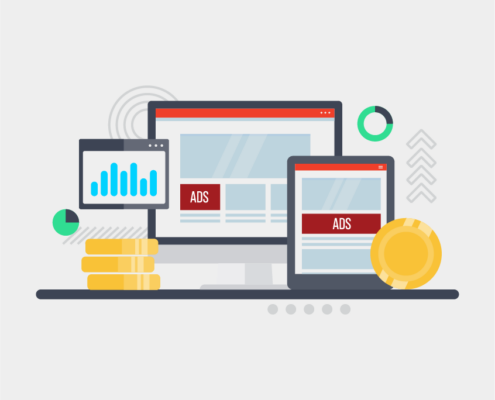

Website navigation lays the foundation for a great online experience. Whether you’re running an e-commerce site, a blog, or a business website, visitors need to find their way around easily. A well-structured navigation system does more than list pages—it guides users seamlessly to the information they need and, ideally, to a purchase.
Why Website Navigation Matters
Website navigation isn’t just about linking pages together. It directly impacts user experience, conversion rates, and even your site’s SEO. When visitors can find what they’re looking for quickly, they’re more likely to stay, explore, and ultimately convert.
But poor navigation? It leads to frustration, high bounce rates, and lost opportunities. Let’s break down how you can refine your website navigation to create a seamless experience for every visitor.
Types of Website Navigation
Before diving into improvements, it’s important to recognize the different types of website navigation:
1. Top Navigation (Header Menus)
This is the classic menu bar that runs across the top of a site, featuring key pages like “Home,” “Services,” and “Contact.” Visitors expect to see it, so make sure it’s clean and intuitive.
2. Sidebar Navigation
This type is typically found in blogs or content-heavy sites. Sidebar navigation helps categorize and link pages that may not be featured in the top navigation.
3. Footer Navigation
The footer is often overlooked but holds a lot of value. It’s where users look for key links they couldn’t find at the top, such as privacy policies or secondary services.
4. Breadcrumb Navigation
Breadcrumbs are a secondary navigation tool, often used on e-commerce sites, that shows users exactly where they are in the site structure. They’re great for giving visitors an easy way to navigate back.
Tips to Improve Website Navigation
Improving website navigation doesn’t mean making radical changes. Often, small tweaks can make a big difference in guiding users through your site. Here are some tips to get you started:
1. Keep It Simple
Complex navigation is a major turnoff. Users shouldn’t have to guess where to click next. Keep your menus simple and direct. Use clear and concise labels like “Products,” “About Us,” or “Get a Quote.” Overstuffed menus or confusing terminology can lead to frustration and drive visitors away.
2. Use Descriptive Labels
Labeling your navigation items well is key to good website navigation. Avoid vague terms like “Solutions”—instead, be specific. “Digital Marketing Services” tells visitors exactly what they’re clicking on, eliminating guesswork and increasing engagement.
3. Implement a Search Function
Even with stellar navigation, users may want to head straight to specific content. Including a search bar at the top of your site gives users an alternative way to get what they need quickly. Make sure it’s easy to find and works properly.
4. Prioritize Mobile Navigation
With more users browsing on mobile devices, optimizing your website navigation for smaller screens is critical. Ensure the menu is accessible and easy to use with one hand. Drop-down menus should work smoothly, and the most important links should be front and center.
5. Highlight Important Pages
If there are certain pages you want visitors to see—like a seasonal sale or an ongoing promotion—highlight them in your navigation bar. Adding a “New” or “Sale” tag can catch the user’s attention and lead to increased conversions.
6. Use Clear Call-To-Action Buttons
Beyond basic menus, your navigation should also include strategic call-to-action (CTA) buttons like “Book a Consultation” or “Get Started.” These CTAs can guide visitors to take action after they’ve found the information they were looking for.
Improving Navigation for SEO and User Experience
Website navigation isn’t just about helping users—it plays a big role in your SEO strategy as well. Here’s how to optimize your navigation to rank higher in search results and keep users happy:
1. Internal Linking
Internal links are an important part of website navigation. Linking from one page to related content helps search engines understand the relationship between pages and keeps users on your site longer. A good rule of thumb is to add relevant internal links to key terms in your content.
2. Use Breadcrumbs for Better Structure
Breadcrumbs are a great addition to most websites, especially if you have a lot of pages. They create a clear path for both users and search engines, making navigation easier and improving the overall structure of your site.
3. Avoid Hidden Navigation
Avoid using JavaScript or other elements that may make navigation menus inaccessible to search engines. When search engines can’t see your navigation, they struggle to crawl your site. Ensure your menus are well-coded and visible to everyone, both human and algorithm.
Avoid These Navigation No-Nos
Website navigation mistakes can cost you potential customers. Here’s what to watch out for:
1. Overloaded Menus
Too many menu items can overwhelm visitors. It’s best to limit your main navigation to five to seven items. If your site is content-heavy, consider using sub-menus to organize it.
2. Unorganized Sub-Menus
Sub-menus are helpful, but they need to be organized. Group related pages logically and avoid creating too many levels, which can make navigation cumbersome.
3. Dead Links
A broken link is a sure way to frustrate users and damage your credibility. Regularly check your website for broken links to keep your navigation polished and effective.
4. Not Testing for User Experience
Never underestimate the power of user testing. Ask friends, colleagues, or even a few customers to navigate your website and give feedback. What seems clear to you might confuse a visitor, so it’s crucial to keep testing and refining.
Key Takeaways
- Keep Navigation Simple: Clear and concise labels make a world of difference in improving website navigation.
- Mobile-Friendly is a Must: Don’t overlook how users interact with your site on mobile—smooth, accessible mobile navigation is key.
- Highlight Key Pages: Make sure important pages stand out through your navigation structure.
- Internal Linking Boosts SEO: Smart internal links keep users engaged longer and help search engines understand your site.
- Test Regularly: User feedback is gold—use it to continue improving website navigation.
Make Your Website Navigation Work Smarter, Not Harder
Don’t make it difficult for visitors to navigate your website. Better navigation means a better experience. It means increased engagement, lower bounce rates, and improved conversions. If you’re ready to enhance your website’s navigation and need some professional support, let’s connect. At Abstrakt Marketing Group, we make sure your site doesn’t just look good—it works perfectly for your users and search engines alike. Let’s get your website running like a well-oiled machine, guiding your visitors exactly where they need to go.










